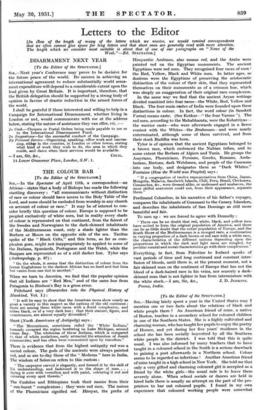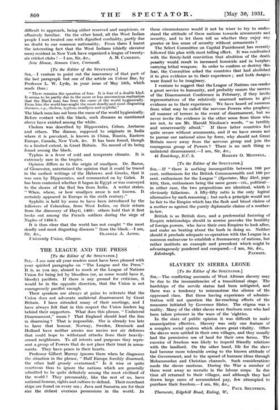[To the Editor of the SPECTATOR.] Sur,—Having lately spent a
year in the United States may I mention one or two facts about the relations of black and white people there ? An American friend of mine, a native of Boston, teaches in a secondary school for coloured children in one of the Southern States. She is a highly cultivated and charming woman, who has taught her pupils to enjoy the poetry of Horace, and yet during her five years' residence in the school she has been socially boycotted by all the Southern white people in the district. I was told that this is quite usual. I was also informed by many teachers that to have taught in a coloured school in the South is a serious drawback to gaining a post afterwards in a Northern school. Colour seems to be regarded as infectious ! Another American friend of mine taught in a high school in New York. She told me that only a very gifted and charming coloured girl is accepted as a friend by the white girls—the usual rule is to leave them severely alone. When school socials or dances are held in hired halls there is usually an attempt on the part of the pro- prietors to bar out coloured pupils. I found in my own experience that coloured working people were somewhat difficult to approach, being either reserved and suspicious, or effusively familiar. On the other hand, all the West Indian people I met treated one with dignified cordiality, partly due no doubt to our common nationality. From them- learnt the interesting fact that the West Indians (chiefly elevator men) resident in New York have organized a league of twenty-







































 Previous page
Previous page